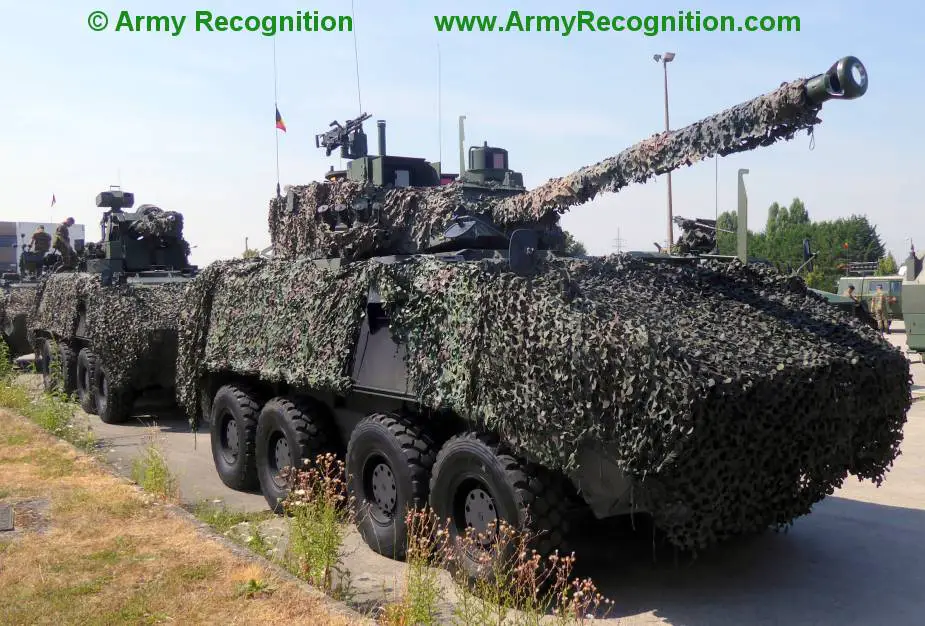Belgian army to update its Strategic Vision 2030 document
Since the publication of the “Vision 2030” in 2016, on the basis of analyzes carried out in 2014 and 2015, international tensions have increased and the pace of strategic changes has accelerated. In December 2020, the Belgian Minister of Defense, Ludivine Dedonder, mandated Colonel Eric Kalajzic (IRSD) and Tanguy Struye de Swielande (UCLouvain) to formulate recommendations in order to update the strategic vision of 2016. They selected ten academics, respecting the linguistic, gender and academic balance.
Follow Army Recognition on Google News at this link
Piranha IIIC DF 90 of the Belgian army (Picture source: Army Recognition)
A member of the Defense cabinet, a member of the general staff (GHQ) and two interns also participated in the meetings. The group acted as a group of independent experts and met physically nine times between February and May 2021 at the Royal Military Academy and virtually. Before each session, those who wished submitted a written contribution to the coordinators to structure the discussion of the day's session. The coordinators also organized 10 online sessions with several experts on the following themes: strategic visions of neighboring countries, hybrid war and information warfare, military medical support, AI and quantum computing, cybersecurity, terrorism in Belgium, special operations, intelligence, nuclear deterrence (future of treaties and evolution) and dirty weapons, NATO development planning process and EU defense capacity planning and IRSD innovation and research.
Land Component to be urgently enhanced
Belgium’s land component is the one with the most gaps. Belgium's partners in NATO expect Belgium to have a fully operational, combat-ready, durable and deployable motorized brigade. The CaMo12 project (Capacité MOtorisée) does not achieve this objective. The Land Component mainly lacks indirect and direct fire support (hence the acquisition just decided of nine French-made Nexter CAESAR self-propelled howitzers) and tactical air defense systems. In addition, the full realization of the brigade requires that all related systems (ammunition, communications, cyber-electronic warfare, tactical ISR, logistics, etc.) be available. However, the current composition of Belgium’s single brigade does not correspond to that of a conventional combined motorized infantry brigade as defined by NATO or the French army, Belgium’s partner in the CAMO programme. CaMo offers significant capabilities for expeditionary operations and could also be engaged in a collective defense mission in Europe if adequate support systems are acquired - including, but not limited to, bridging capabilities.
At present, the Belgian Land Component cannot meet NATO's increasing capacity objectives resulting from the need to be able to strengthen the eastern flank in crisis scenarios. To compensate for this lack, it must develop, both in terms of units and personnel.
This requires :
• Continuous application of the 2016 Strategic Vision and its development plan for capabilities. This is particularly the case with regard to the application of indirect fire (artillery), but also ground-based air defense (GBAD) / unmanned aerial systems (C-UAS) and their associated sensors.
• Consider a potential Belgian participation in the future Franco-German Main Land Combat System (MGCS).
Special operations capabilities must be developed in accordance with the 2016 Strategic Vision, in particular with essential SOF air assets (13V / STOL helicopters and aircraft).



























